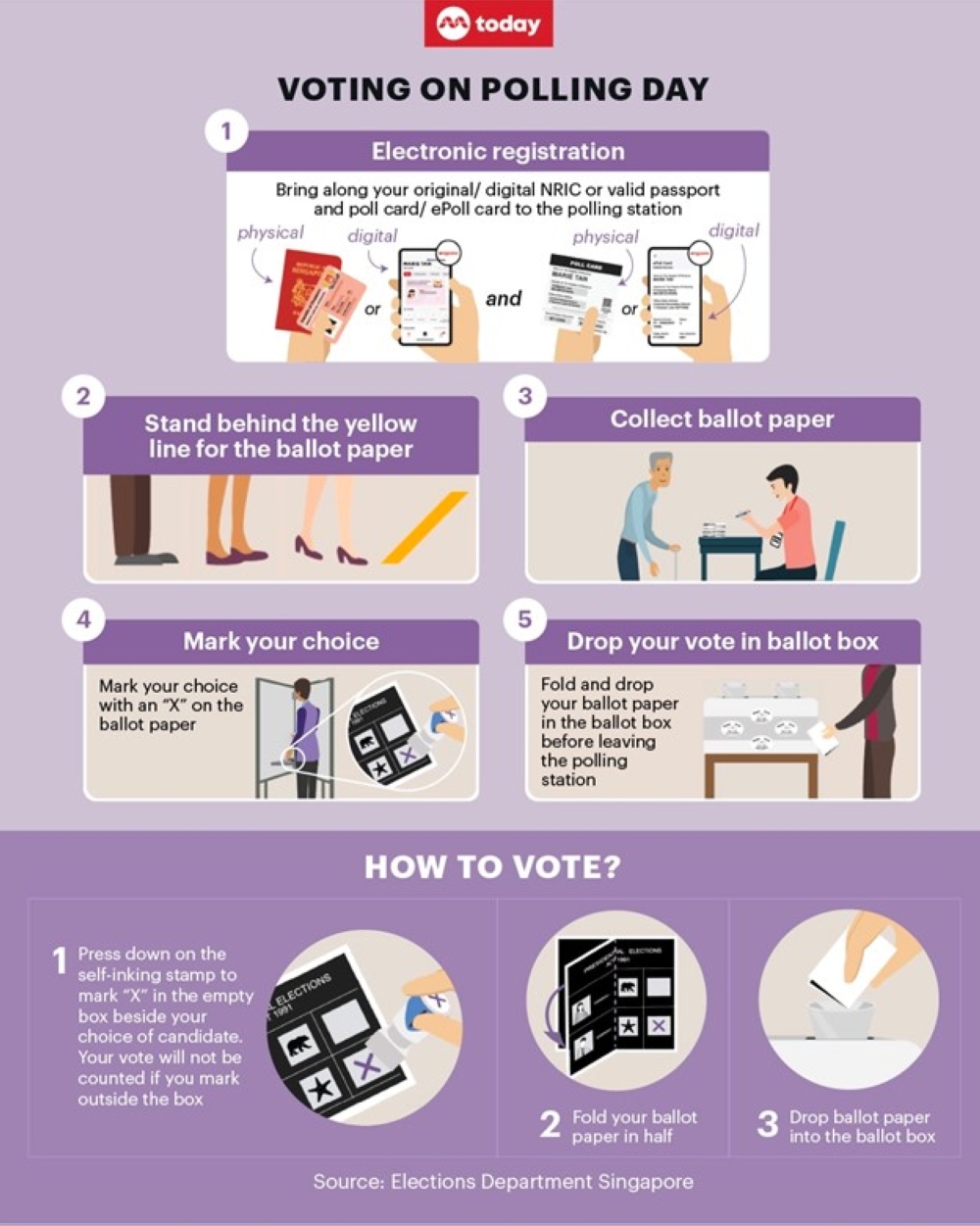SINGAPORE, Aug 31 — There will be several firsts in this year’s Presidential Election, as more than 2.7 million voters head to the ballot box on Friday to vote for Singapore’s ninth President.
Voters can on Friday opt to mark their choice on the ballot paper with either a regular pen or the new X-stamp, which will have a bigger width and offer better grip compared to the X-pen used in the 2020 General Election.
Overseas Singaporeans can vote by post for the first time, while special polling arrangements will be made for nursing home residents, allowing them to vote from within their premises.
This will also be the first Presidential Election where the Elections Department Singapore (ELD) will publicly release sample counts, since the practice was first introduced in the 2015 General Election.
The 2,709,455 electors can cast their votes across 1,264 polling stations in Singapore — a 15 per cent increase from the 1,097 polling stations in the 2020 General Election. Polls will open at 8am and close at 8pm on Friday.
Votes cast in Singapore are immediately counted after the polls close, and may continue into the early hours of the next day, said ELD on its website.
Before the final results are released, ELD will also publicly release sample counts, which aim to provide an early indication of the voting outcome.
TODAY takes a look at what sample counts are, how they are generated and when they are expected to be released.
What is a sample count?
A sample count is performed at the start of the counting process to get an early indication of the possible outcome of the election.
Why does the ELD release a sample count?
A sample count can help prevent speculation and misinformation from unofficial sources while counting is underway, and before the final official results are announced, said ELD in a written response to TODAY’s queries.
A sample count also helps election officials check against the result for that electoral division, ELD had said in a media release issued in 2015.
How is a sample count taken?
Votes from all 1,264 polling stations will be included in tabulating the sample count.
At each counting place, a counting assistant will pick up a random bundle of 100 ballot papers from the pile of ballot papers.
This is done in front of the counting agents and candidates, if they are present.
The counting assistant then counts the number of votes for each candidate in these 100 ballot papers.
After a sample count is taken, the assistant returning officer records the votes for each candidate in a form, and shares the sample count for the polling station with the candidates and counting agents present.
The count for each candidate will then be added up across all 1,264 polling stations, with weightage given to account for the difference in number of votes cast at each polling station.

When are the sample counts expected to be released?
Sample count figures will be published after all the counting places have submitted their figures.
The first sample count in the 2015 General Election was released at about 9.40pm, less than two hours after voting closed at 8pm on September 11 that year.
To speed up the counting process, mechanical counting machines introduced at the 2020 General Election will be deployed at counting centres on Friday.
These machines, similar to those used to handle and count banknotes, raise the efficiency of the counting process.
Subsequently, the sample count will be released to the media and published on ELD’s website, while counting is still in progress.
As this is a sample count, the election result could be different.
The public should still wait for the returning officer’s announcement to know the election result, ELD said. — TODAY






















